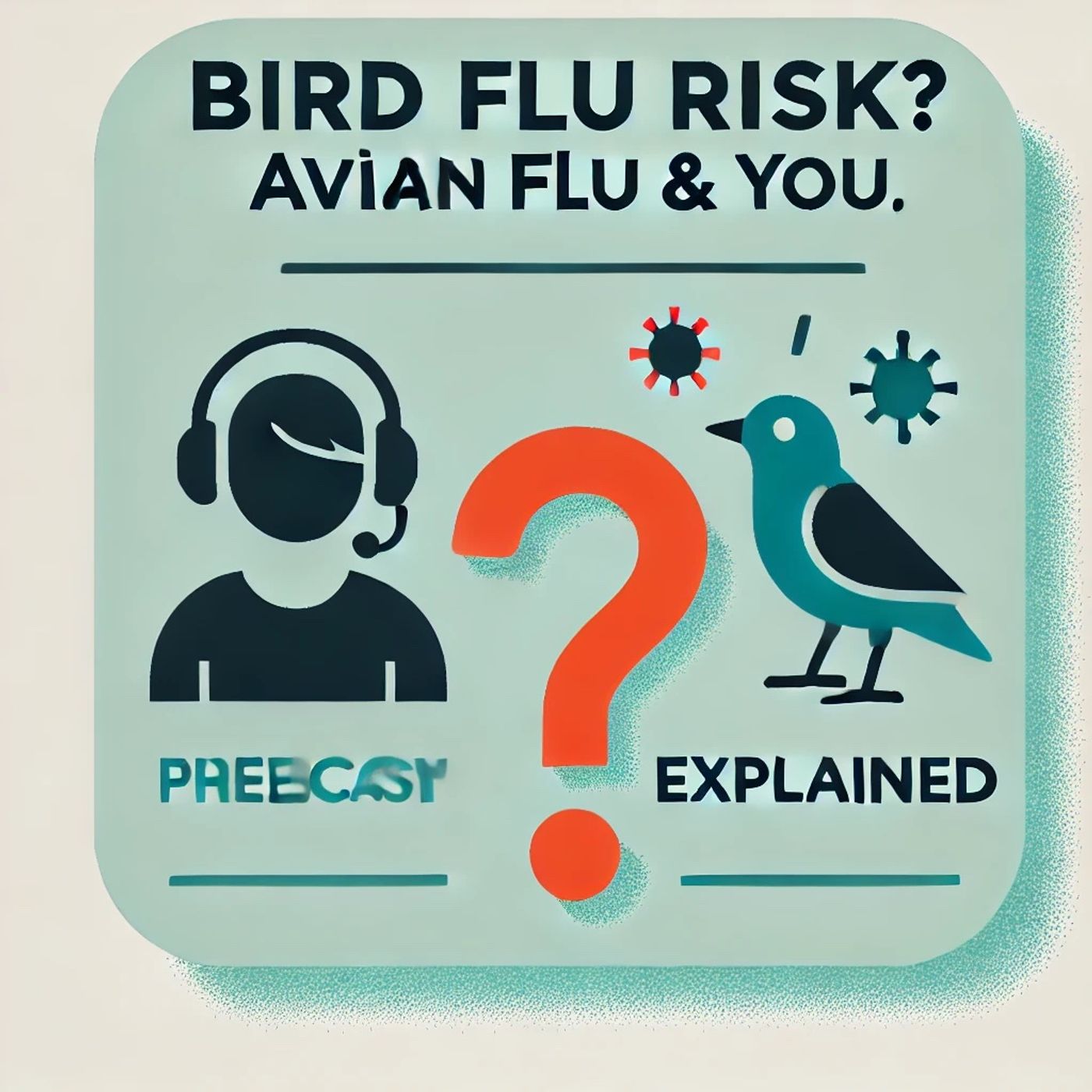Podcast Episode Details
Back to Podcast Episodes
Bird Flu 2025: Your Essential Guide to Understanding Personal Risk and Staying Safe
Welcome to “Bird Flu Risk? Avian Flu & You, Explained.” I’m glad you’ve tuned in for this essential episode on understanding your personal risk when it comes to bird flu, or avian influenza, in 2025.
Let’s start by talking about risk factors. Bird flu risk depends on your **occupation, location, age, and health status**. If you work directly with poultry or dairy animals—think poultry and dairy farm workers, slaughterhouse staff, animal health responders, or veterinarians—you have a higher chance of being exposed. The Centers for Disease Control and Prevention notes that frequent contact with live or sick birds or cows, handling raw milk, or being in environments with animal outbreaks increases this risk significantly.
For those living near outbreaks, especially in areas with poultry farms or documented avian flu among livestock, there’s a localized bump in risk. Recent information from Johns Hopkins and the World Health Organization shows that while avian influenza A H5N1 remains present in U.S. herds, case numbers have sharply declined, and transmission to the general population is still very rare.
Age matters too. Older adults are more likely to get very sick from bird flu, while infants and young children generally face lower risk. People with weakened immune systems or chronic health issues, like heart or lung disease, should be especially cautious.
Now, let’s walk through a “risk calculator” narrative:
- Imagine you’re a poultry worker in a county with active outbreaks: your risk is considered low to moderate—higher if you don’t use gloves, masks, or proper hygiene.
- Live in a city, work an office job, and only see chickens at the grocery store? Your risk is very low.
- If you’re over 65 or have health problems and live near an outbreak, your personal risk climbs, especially if you handle animals or consume unpasteurized products.
So, what should high-risk individuals do? Always wear protective gear—gloves, masks, goggles—when working with livestock or cleaning contaminated environments. Wash hands thoroughly after animal contact. Don’t consume raw or undercooked poultry, eggs, or unpasteurized milk. Report any flu-like symptoms to your healthcare provider right away and let them know about your occupational risk.
If you’re a backyard flock owner or a hunter, the same guidance applies: practice good hand hygiene, clean surfaces, and avoid close contact with visibly sick or dead birds.
For most people, the risk remains very low. Surveillance reports from U.S. health authorities and the CDC show no ongoing human-to-human transmission in 2025, and avian flu hasn’t become a widespread concern for the general public.
So, when should you worry? Be vigilant if you work with animals, live in an affected area, or are immunocompromised. Otherwise, routine handwashing and safe food preparation provide ample protection.
Remember, personalized, practical choices matter more than panic. Stay informed. Protect your health sensibly. And if you have questions or symptoms, contact your local health department.
Thanks for tuning in to “Bird Flu Risk? Avian Flu & You, Explained.” Come back next week for more essential health insights. This has been a Quiet Please production. To find out more, visit Quiet Please Dot A I.
For more http://www.quietplease.ai
Get the best deals https://amzn.to/3ODvOta
Published on 17 hours ago